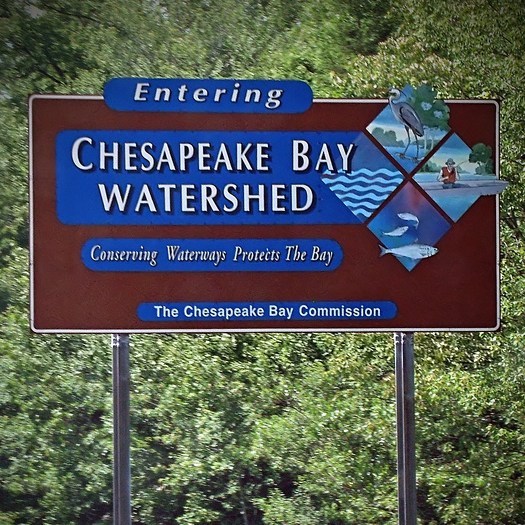Leadership in the Chesapeake Bay Watershed
By: Alec Masella
July 2, 2018

The Center for Leadership in Global Sustainability educates, inspires, and empowers professionals to achieve their career goals by offering credentials, competencies, connections, and confidence. Executive Master of Natural Resources (XMNR) graduates Kate Fritz, Abbi Huntzinger, and Molly Brown are three of the many XMNR alumni that work as sustainability leaders in the Chesapeake Bay watershed. While their responsibilities vary, these graduate often collaborate and rely on the work of the others to ensure environmental protection of this important mid-Atlantic drainage basin.

“The health of the bay is in part maintained through grant funded projects, and it’s my job to make sure the best projects receive funding,” Abbi says. As a Senior Program Officer at the Chesapeake Bay Trust, Abbi manages a portfolio of programs for environmental outreach, restoration, and technical assistance for the watershed.
Abbi sees firsthand how the goals of her organization dovetail with those of other related groups. For example, she works closely with Charles County Watershed Restoration and Protection, where she helps protect this Maryland county’s waterways by finding development patterns and troubleshooting water issues such as pollution.
“What’s great about my position with the Trust and partnerships like the one with Charles County is that I get to see everything that’s happening from an aerial view– all throughout Maryland– and get an idea of who the environmental stakeholders are and how they are making an impact. I can then see how we the Trust’s mission intersects with theirs to yield big results.”
The XMNR program empowers its students to see how environmental impact occurs at all levels, including the private and public sectors. Abbi’s work at the crossroads of environmental needs, legal assistance, and project execution has brought her in contact with colleague Kate Fritz, Executive Director of the Alliance for the Chesapeake Bay, and Molly Brown, staff attorney at the Chesapeake Legal Alliance.
Much like Abbi’s position at the Chesapeake Bay Trust, Kate’s role at the Alliance for the Chesapeake Bay includes overseeing specific restoration activities for the watershed.
“My job is two-pronged,” she says. “A lot of my responsibilities include gathering groups together to discuss and target problems about water resources. But I also coordinate the actual work that goes into solving the issues– I meet with stakeholders and plan out the projects. One of our most recent projects involved building rain gardens to soak up water runoff.”

Since this nonprofit is about to celebrate its 50th anniversary, some of Kate’s additional roles as the CEO will be to update the group’s strategic plan, find ways to expand, and grow funding. To Kate, much of her success as an environmental leader can be chalked up to her XMNR experiences.
“Some of the most invaluable lessons,” she says, “were those having to do with organizational needs and strategies. The program empowered me to make a change by giving me experience in applying larger concepts to practical solutions. After many great group discussions about stakeholders and policy, I became close with many of my classmates, and those relationships have carried over until now.”
While each of their backgrounds are different, the XMNR program has allowed these three graduates to see just how much the success of their work relies on the skills of the others. Molly’s role in Chesapeake environmental conservation is to provide legal assistance such as overseeing contracts and facilitation.
Having worked with the Chesapeake Legal Alliance for over a year now, Molly has brought to the team a keen sense of the benefits of pro bono sustainability projects and the need for interdisciplinary teamwork from her experience with the XMNR program.
“As for my part in the bigger Chesapeake picture,” she says, “I’m right around the corner from Abbi, and we work with a lot of the same people. The Chesapeake Bay Trust funds projects and works out the implementation. My team works from more of an organizational standpoint.”
The XMNR program has equipped these three professionals with the skills necessary to communicate about environmental issues and then lead collaborative project solutions. By creating and maintaining relationships beyond the program, they have the competencies to build partnerships in working toward preserving the Chesapeake Bay and surrounding land.
“We’re all 10 to 15 years into our careers,” Abbi says. “It’s good to know we’ve been super motivated, committed to, and educated by this program. It has given us strong leadership skills, and those have led to strong results.”

---

Interested in enrolling in learning more about Virginia Tech’s Executive Master of Natural Resources program? Contact us by phone (571.858.3338) or email cligs@vt.edu) to set up an advising call with Program Director Dr. David Robertson.
The Center for Leadership in Global Sustainability thanks the following photographers for sharing their work through the Creative Commons License: Nicholas A. Tonelli; and Chesapeake Bay Program.


